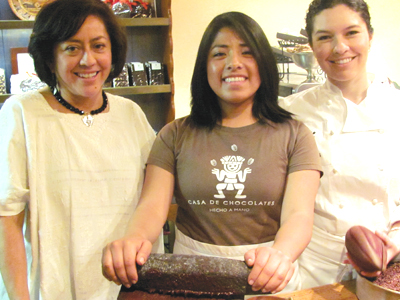
Latinas continue to drive small business creation and the rise in levels of educational attainment has escalated buying power, higher income, and reduced poverty. A new report on the "Economic Status of Latinas" found that the number of Latina-owned businesses in California increased 111 percent since 2007.
Those businesses employ more than a half million people in the state, the report from Hispanas Organized for Political Equality (HOPE) found.
Here are some of the report's other findings:
• More small business growth: Latina-owned businesses in California posted impressive growth with 433,300 firms in 2016, a 111% increase from 2007.
• Increasing educational attainment: High school graduation rates for Latinas in California are at 83.3%, increasing by 6.9% since 2011.
• Increasing purchasing power: Hispanics in the U.S. represented $1.4 trillion in purchasing power in 2016, up 167% since 2000, and is projected to reach $1.8 trillion by 2021. In California, the Hispanic purchasing power of $359 billion was 19.5% of the state total in 2016.
• One in five people in California is Latina.
Norma Armon, and her daughter Carla own and manage International Contact, Inc., an Oakland-based communications agency providing multiple language services and translation to the City of Oakland, local businesses, and big brands such as Apple, Sprint, and Kaiser Permanente.
Like the many businesses that Visión Hispana has profiled, International Contact started as a small family business. Thirty-four years after starting the company, the women have 15 full time employees and 2,000 contractors as needed. With sales revenue of $1.4 million last year, they are making a sizable contribution to the $1.4 trillion in total revenue that women-owned businesses generate in the U.S.
When asked what their main inspiration is to operating the business, Norma says, “The work we do is of utmost importance to the target users, as it places Low English Proficiency persons on an equal footing with English speakers in the ability to be advised of services, programs and products.”
Norma also shares what she sees are the rewards of having her own business: “Giving back to the community, the ability to afford our own building and developing my skills in the many hats a business owner must wear.”
A separate report from the U.S. Small Business Administration (SBA) Office of Advocacy shows the major economic contribution of all women-owned businesses to the nation’s economy. The report, "Women’s Business Ownership," uses the most recent Census Bureau data to create a highly detailed portrait of this group, including their role in minority business communities. The report’s findings include:
• The 9.9 million businesses that are majority-owned by women contribute $1.4 trillion in sales to the economy.
• Thirty-six percent of all businesses are women-owned, accounting for 12% of all business sales and 15% of employment.
• Industries with the most women-owned employer firms range from restaurants to physicians and management consulting.
• Women own a larger share of businesses in every minority group compared to their ownership rate of all businesses (36%). Almost 44% of Hispanic-owned businesses and 60 percent of Black-owned businesses are women-owned.
• Women in equal business partnerships with men added another $1 trillion in sales and 6.5 million jobs. Through the efforts of women business owners, more than $450 billion in salary and wages were paid to their workers.

